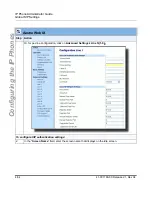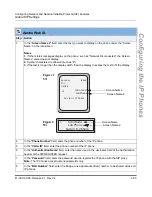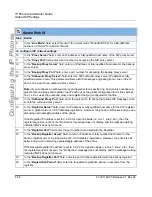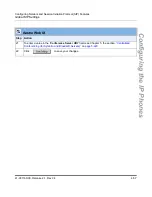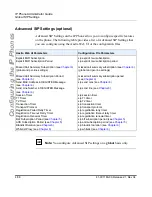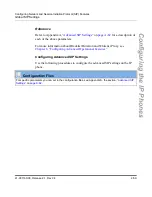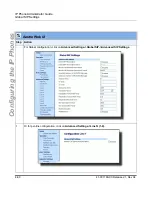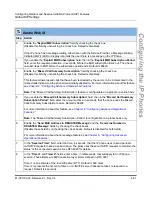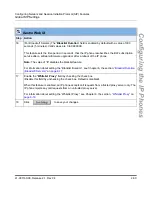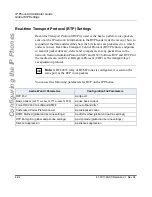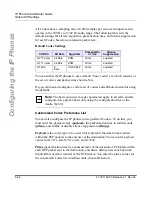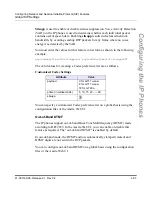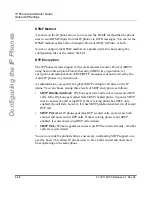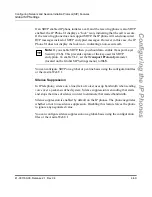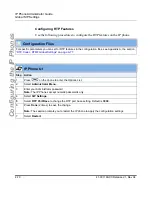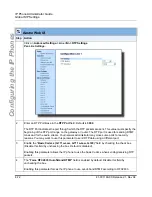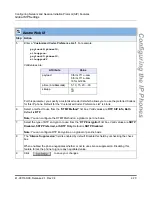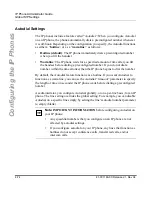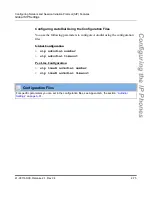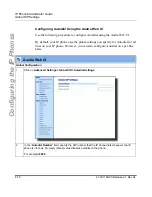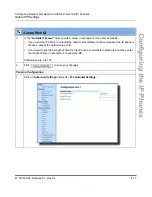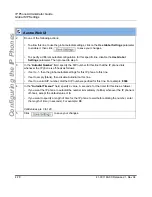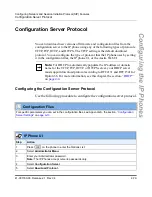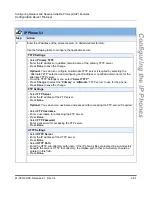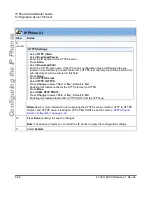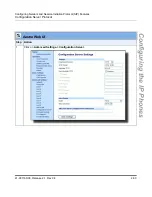
Global SIP Settings
4-68
41-001160-00, Release 2.1, Rev 04
IP Phone Administrator Guide
Configuring the IP Phones
DTMF Method
A feature on the IP phone allows you to select the DTMF method that the phone
uses to send DTMF digits from the IP phone via INFO messages. You can set the
DTMF method as Real-Time Transport Protocol (RTP), SIP info, or both.
You can configure the DTMF method on a global or per-line basis using the
configuration files or the Aastra Web UI.
RTP Encryption
The IP Phones include support for Secure Real-time Transfer Protocol (SRTP),
using Session Description Protocol Security (SDES) key negotiation, for
encryption and authentication of RTP/RTCP messages sent and received by the
Aastra IP phones on your network.
As administrator, you specify the global SRTP setting for all lines on the IP
phone. You can choose among three levels of SRTP encryption, as follows:
•
SRTP Disabled (defaul
t): IP phone generates and receives nonsecured RTP
calls. If the IP phone gets called from SRTP enabled phone, it ignores SRTP
tries to answer the call using RTP. If the receiving phone has SRTP only
enabled, the call fails; however, if it has SRTP preferred enabled, it will accept
RTP call.
•
SRTP Preferre
d: IP phone generates RTP secured calls, and accepts both
secured and non-secured RTP calls. If the receiving phone is not SRTP
enabled, it sends non-secured RTP calls instead.
•
SRTP Onl
y: IP phone generates and accepts RTP secured calls only; all other
calls are rejected (fail).
You can override the global setting as necessary, configuring SRTP support on a
per-line basis. This allows IP phone users to have both secured and unsecured
lines operating on the same phone.

